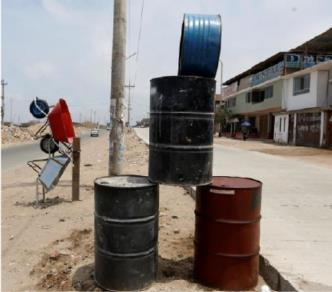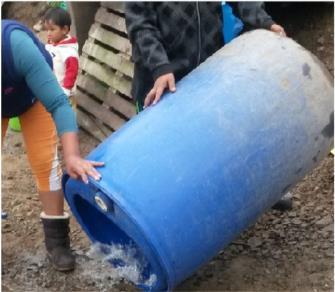
2 minute read
Location and Design Choices
from EWB Project Report
by jtc_design
UVH2GO was designed with the intension of having little to no expense to build and use the product. This was why Solar Energy was selected as the only source used to heat the water. This proved to be effective when incorporating the results found in the Modulation of a parabolic reflector experiment. Along with the heat transferred from the sun’s rays, it also provides a strong constant source of Ultraviolet-Light. This furthers the sterilisation process due to the properties it harnesses. When focussed, UV-Light has the ability to kill bacteria’s such as coliform which when ingested have been found to cause sickness, diarrhoea, vomiting, cramps, nausea, fever, fatigue and even death in some cases.
(Department of health, 2021)
Advertisement
The Product is best suited to locations within both Lobitos & Piedritas. The information stated and shown on the figure is for Lobitos but Piedritas experiences almost exactly the same weather conditions due to lying within the same Hyper arid-zone. The annual high temperatures exceed 31 degrees Celsius and the lows average at 28 degrees Celsius maintaining a hot and mainly sunny climate all year round with varying humidity.
Figure 9 – An infographic detailing the average temperatures in Lobitos
100% of the materials used to make UVH2GO can be locally sourced from areas in and around Lobitos and Piedritas. At least 80% of the materials can be obtained at no cost. The storage tanks for water collection are the same barrels residents use to store water. Peru is well known for its oil exportation, with both towns lying within an oil concession area. The steel barrels previously used for the transportation of oil were used to create what are now pillars to hold up and form the large metal structures and supports within the design. The heating and sterilisation sphere located at the focal point of the parabola is the same product previously used in the fishing industry as floats with slight modifications.
These three main materials in our product are found in abundance in Peru. Some dumped after use, some passed onto other users and some sold at a very cheap price. It was important for the design team to use resources that are available and cheap or free in the area even if it meant sacrificing maximum efficiency of the product. This is due to the fact the product is built by the residents themselves who generally have low paying jobs.

Figure 10- Glass Fishing Floats Figure 11 – Steel Barrels used for the transportation of Crude Oil Figure 12 – HDPE Barrel used for water storage







